Frost Protection: To Cover Plants or Not?
The cold weather has arrived in my neck of the woods with even colder temperatures on their way later this week.
When temperatures dip below 32 degrees, you will find me wearing warm socks, slippers, a sweater, and cardigan when I’m indoors. But, besides me – frost-tender plants are also affected by the cold temperatures.
Have you ever wondered why your plant’s leaves turn brown and crispy after a freeze? Well, ice crystals form on the top of the leaves, which ‘sucks’ out the moisture from the leaf, leaving it brown and crispy.
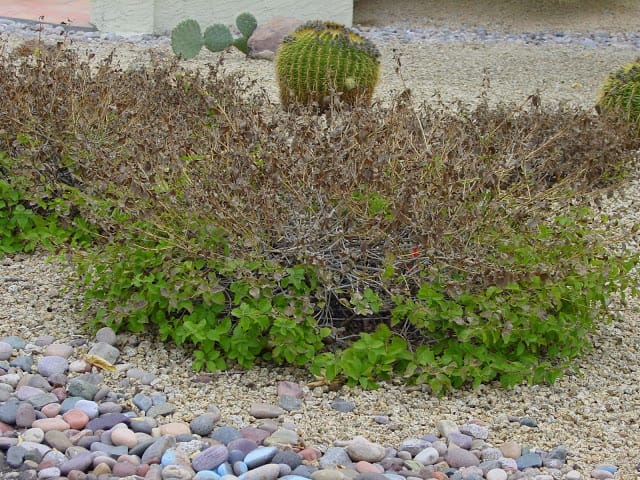
Many plants handle cold weather just fine and have no problems with frost. However, if you have frost-tender plants, such as bougainvillea, lantana, or yellow bells, you face a choice; Do you leave them unprotected from freezing temperatures and live with the unattractive frost-damaged growth? Or do you protect them when temperatures dip below freezing?
Either choice is fine and is a matter of personal preference. Frost-damaged growth can be pruned back once the last frost of the season has passed (early March where I live). But, if you don’t want to live with brown, crispy plants for a few months, then protecting your plants when temps dip below freezing is necessary.
In the daytime, the sun shines on soil, warming it. At night, the soil releases the warmth from the ground. When you cover your plants – the heat is captured keeping your plants warmer.
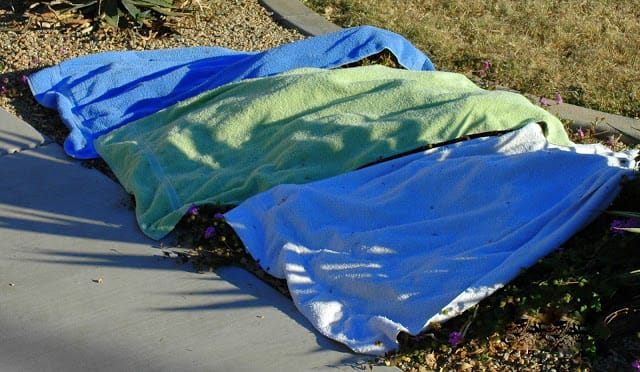
Plants aren’t fussy about what type of covering you use (with one exception); old sheets and towels are usually on hand and are easy to use. Burlap and newspaper are also useful as coverings. Cover your frost-tender plants in the evening, making sure that there aren’t any gaps where the heat can escape. You can use large rocks or clothespins to secure them in place. In the day, remove the covers once temperatures have risen above freezing, and allow the sun to warm the soil again.
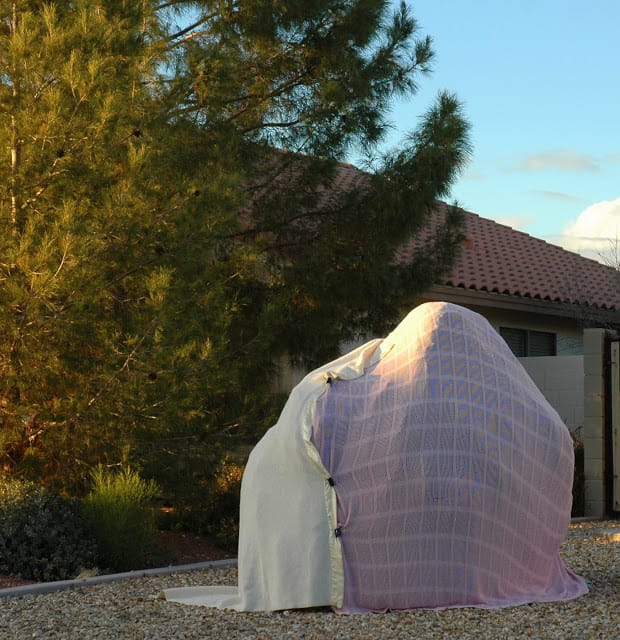
Don’t keep the coverings on your plants for more than two days in a row without removing them in the day since this can cause water to become trapped underneath, leading to fungal diseases and can cause plants to produce new growth that can be easily damaged by cold.
The best type of frost protection is frost cloth, which is a breathable fabric because it can ‘breathe,’ you can leave the frost cloth on your plants for a longer period. But, use it only when there is a threat of frost. After three days, uncover your plants during the day to allow the sun to reach your plants.
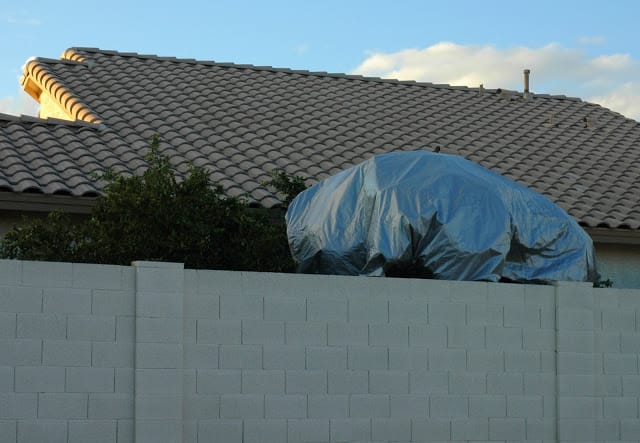
My neighbor made things worse by using plastic as a covering for his citrus trees.
One type of covering that you shouldn’t use is plastic, which transfers the cold to your plants and damages leaves when it touches the plant itself.
In my garden, I only protect my frost-tender trailing lantana which is in a high-profile area next to my entry. The rest of my frost-tender plants, I leave alone until it is time to prune back their frost-damaged growth in spring.
So whether you cover your plants or not, the choice is yours 🙂
For more information on frost protection, check out the following link from the University of Arizona: Frost Protection
How to Protect Plants From Frost

 Noelle Johnson, aka, 'AZ Plant Lady' is a author, horticulturist, and landscape consultant who helps people learn how to create, grow, and maintain beautiful desert gardens that thrive in a hot, dry climate. She does this through her consulting services, her online class Desert Gardening 101, and her monthly membership club, Through the Garden Gate. As she likes to tell desert-dwellers, "Gardening in the desert isn't hard, but it is different."
Noelle Johnson, aka, 'AZ Plant Lady' is a author, horticulturist, and landscape consultant who helps people learn how to create, grow, and maintain beautiful desert gardens that thrive in a hot, dry climate. She does this through her consulting services, her online class Desert Gardening 101, and her monthly membership club, Through the Garden Gate. As she likes to tell desert-dwellers, "Gardening in the desert isn't hard, but it is different."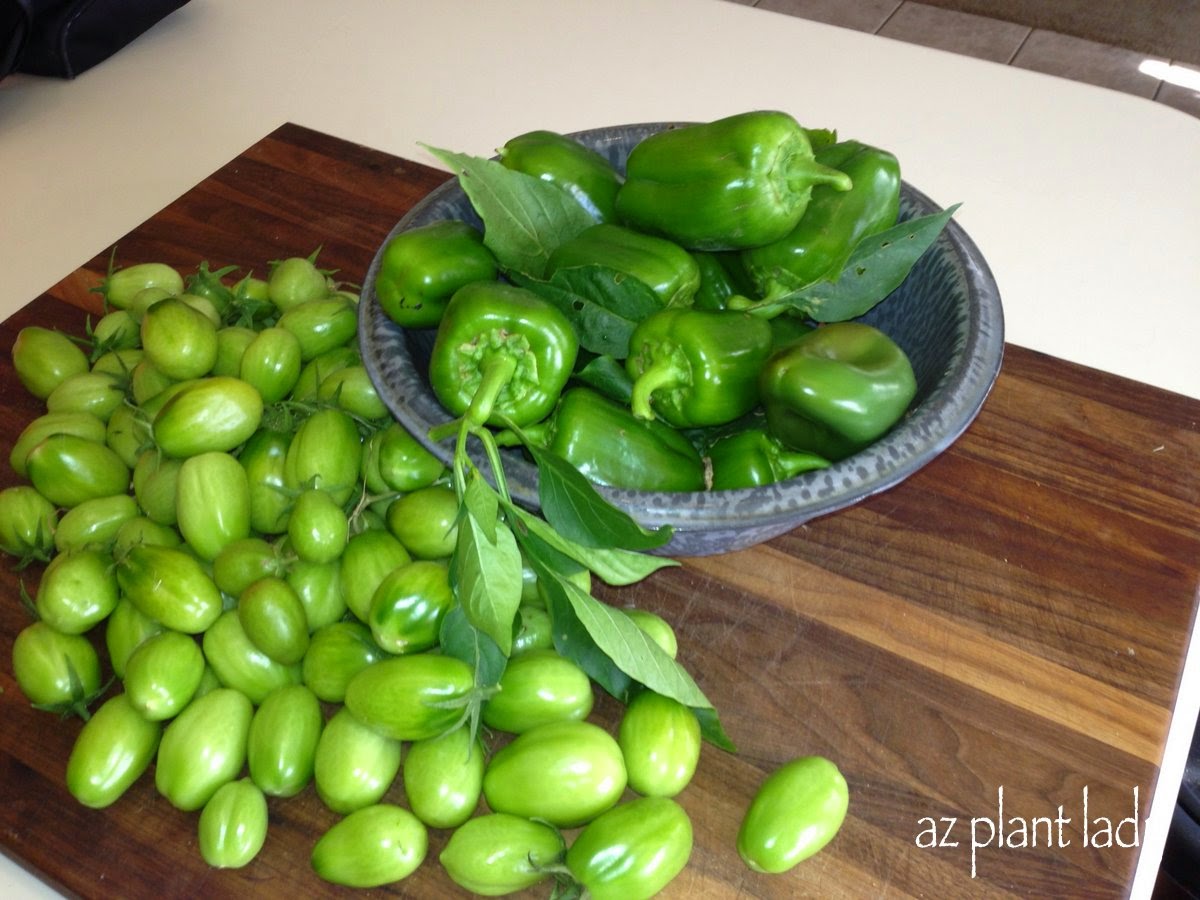
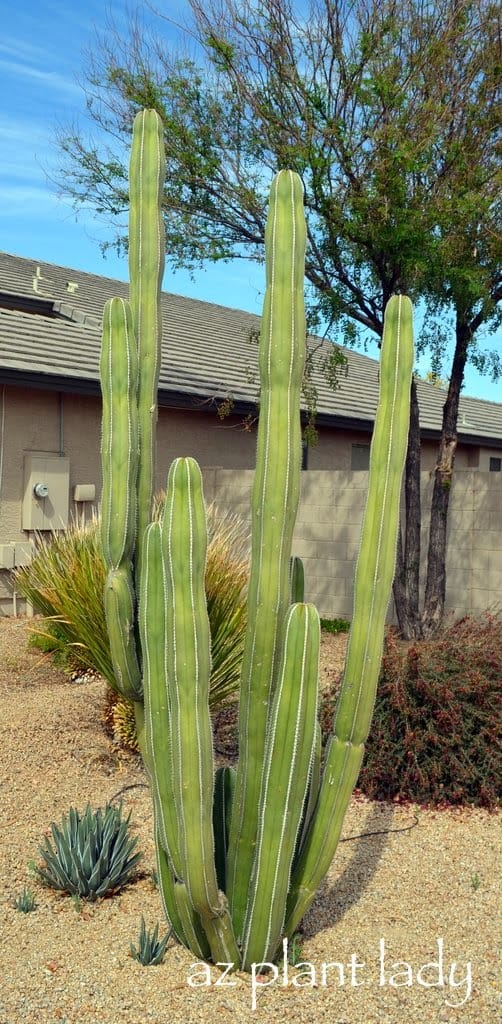
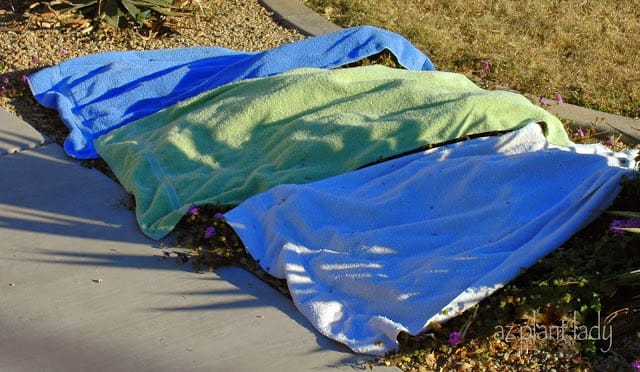
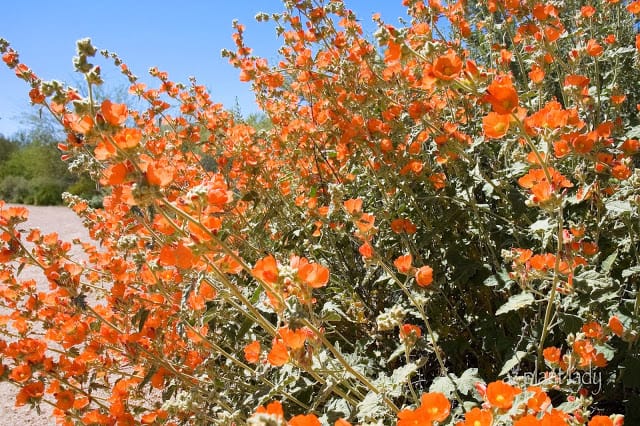

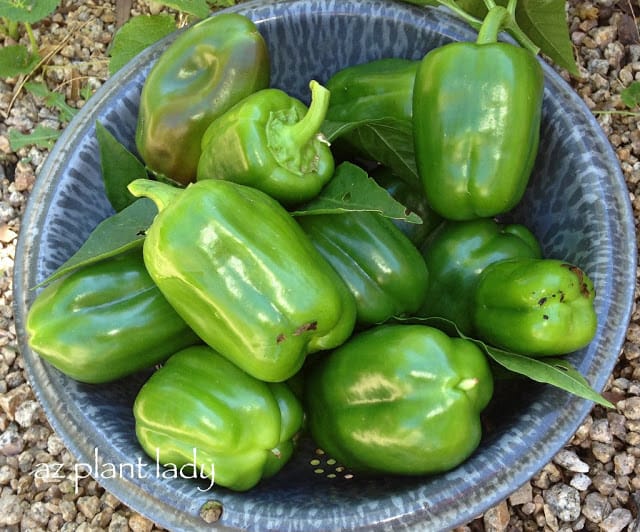










Usually if I started covering plants, I brought them through the winter and then they died with the inevitable late frost.
Now I take cuttings of anything I could not live without and let the rest fend for themselves.
Haven't covered any plants here in Middle TN. I don't notice anyone else covering plants here either. I guess we just have too many frequent frosts and freezes for people to be running back-and-forth covering and uncovering plants through the winter.
But if I lived in a climate that just got *occasional* frosts and freezes, I'd definitely give it a try.
To keep my delicate flowering vines from freezing I put a couple strands of lights on them. The lights give off enough heat to keep my plants from freezing if it gets too cold. The strings of lights look pretty all intertwined in the vines at night and they add additional lighting to your yard.
Hi Trish,
What a great idea! You are right that lights can help keep plants from freezing, but if temps get into the 20’s, sometimes the light aren’t enough, so you may need to add a covering on those nights just in case 🙂
I covered my Yellow Bells with frost blankets and they actually fried the entire top sections of my bushes turning them black! I didn’t even leave them on lone the next day. Now we have another freeze warning coming up and I was kind of panicking because all of my plants, which include yellow bells, orange jubilee, red bird of paradise, and lantana were all planted just back in August, and I have been told to cover them and I have also been told to not cover them. I can live with the brown leaves and stems, my biggest concern was keeping the plants alive in general.
Hi Penny,
I’m not sure what happened with the frost blankets, but you can go ahead and use blankets, quilts, towels and sheets. Make sure to cover the entire plant, leaving no gaps between the ground and plant. This should help 🙂
Thanks for the quick response. Do you feel that I should cover these plants, or will they be okay if I don’t cover them? We can go as low as 27 tonight since we have another warning, but I’ve had people who work at nursery’s tell me to only cover them if we dip down into the low 20’s,
Hi Penny,
I would definitely cover them as they are young and newly planted, which makes them more susceptible to cold injury. Frost damage is cumulative and becomes worse each day when temperatures dip below freezing.
I hope this helps!
In TN, I will cover during Oct and sometimes Nov tender shrubs like lantanna, simply to get a few more weeks before it all turns brown. I only do this if forecasts appear for mild frost followed by days of warm.